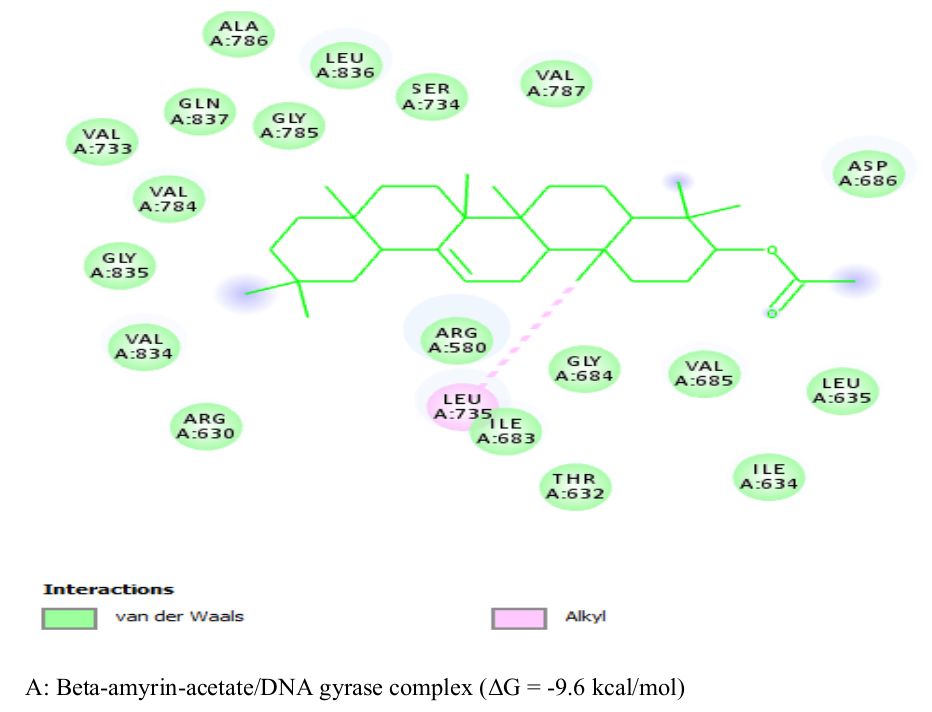Isolation, Characterization, Antimicrobial and Theoretical Investigation of Some Bioactive Compounds Obtained from the Bulbs of Calotropisprocera
Keywords:
Phytochemical Screening, Anti-microbial screening, Calotropis procera, PharmacokineticsAbstract
This study characterizes the bioactive molecules from the bulb of Calotropisprocera and investigates the antimicrobial activities of the crude extracts. Theoretical studies on the two isolated compounds in the crude extract were also accomplished.The bulbs were air dried, pulverized, and subjected to extraction procedures by maceration using 500 mL each of normal-hexane, ethyl acetate and methanol. The crude extracts were further tested onmicroorganisms and phytochemical screening using standard procedures. In addition, the bioactive compounds in the extract were screened against DNA gyrase of two Gram negative bacterial species; Escherichia coli and Salmonella typhiusing Molecular Docking simulation techniques and further subjected to ADMET profiling,using the Swiss ADME online server. The Crude ethyl acetate extract has the highest effective activity against Escherichia coli (MIC 2.5mg / mL and MBC/MFC 5mg / mL), Staphylococcus aureus (MIC 2.5mg/mL), Candida albicans, Salmonella typhiand Candida stellafoidea (MIC 5mg/mL). beta-Amyrin acetate and Taraxasterol are the two phytochemicals in the purified white crystalline fractions and were found to fasten to the active sites of DNA gyrase of the Gram negative bacterial species via hydrophobic and hydrogen bond interactions, with binding activity value of -9.6 kcal/mol and -9.5 kcal/mol, respectively. Also, ADMET investigations of the compounds revealed their sound oral bioavailability and excellent pharmacokinetic and toxicity profiles. The findings of this study could provide a platform for discovering safe and potent antibiotics against pathogenic microbes ravaging our society.

Published
How to Cite
Issue
Section
Copyright (c) 2023 M. E. Khan, C. E. Elum, A. O. Ijeomah, P. J. Ameji, I. G. Osigbemhe, E. E. Etim, J. V. Anyam, A. Abel, C. T. Agber

This work is licensed under a Creative Commons Attribution 4.0 International License.
How to Cite
Most read articles by the same author(s)
- E. E. Etim, Benchmark Studies on the Isomerization Enthalpies for Interstellar Molecular Species , Journal of the Nigerian Society of Physical Sciences: Volume 5, Issue 2, May 2023







